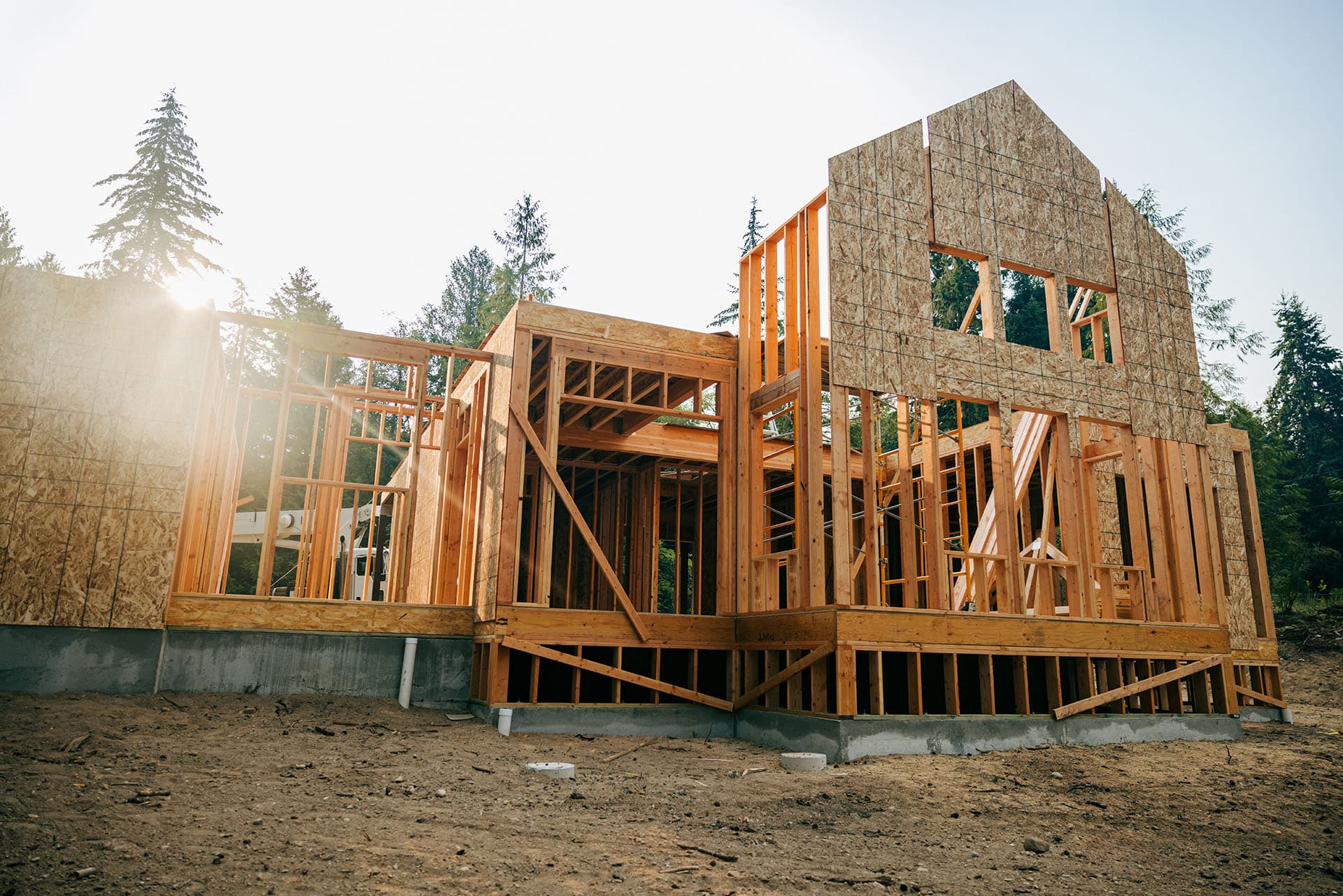A closer look at Toronto’s housing affordability plan
Can Toronto deliver a new model to solve the affordable housing crisis?

Key highlights
Toronto’s new Mayor Olivia Chow has proposed a self-funded housing plan that aims to provide 25,000 homes made up of market-rate, affordable, and deeply affordable housing
Mayor Chow's plans to create affordable housing depends on a financial engineering arrangement that will be based on city-backed debt that requires market-rate units to sustain the program
Any self-imposed rent control policies on market-rate units need careful consideration pertaining to the risks that it could create for the city’s broader housing plan and taxpayers
For Chow’s plan to stay on track, she and her team will need to stay focused, start slow and keep expectations reasonable
Taking a closer look at Olivia Chow’s housing affordability plan
Concerns regarding housing affordability have reached fever pitch for voters and governments alike in Toronto and across Canada as home costs and rents continue to surge. In response to this, Mayor Olivia Chow has outlined an ambitious plan to expand the city’s role in building both market-rate and affordable homes to ease the city’s growing affordable housing crisis.
At the provincial level, efforts to address the problem include four iterations of Housing Supply Action Plans (“HSAPs”) with a fifth expected to come out in the fall. Each HSAP iteration has introduced significant legislation changes that form the basis for how housing is planned for. In addition to policy changes, the provinces recently announced its Building Faster Fund, which is meant to reward cities like Toronto that deliver on their housing targets.
Complimenting the province’s efforts, the federal government’s $4 billion Housing Accelerator Fund (HAF) will also provide funding to cities, towns, and Indigenous governments to develop innovative measures to unlock new housing supply and fast-track the creation of 100,000 new homes across Canada. In addition to encouraging municipal policy changes, the federal government also recently announced a goods and services tax rebate for new rental housing to encourage the for-profit and non-profit housing sector to bring supply online faster.
Local, provincial, and federal combined initiatives are expected to start moving from political debate to tangible action to address Toronto’s burgeoning housing crisis. The latest proposed revisions to the City Homes Plan would add 7,500 affordable homes and set a new target of 17,500 rent-controlled homes for completion by 2031, on top of the 40,000 affordable units that the city has already pledged to build by that date.
Altus Group urban planning expert, Alex Beheshti, digs into the details of that plan to highlight the challenges and opportunities that lie ahead for the City of Toronto’s quest to bring affordable housing to residents.
Hurdles to executing the plan
Mayor Chow has made housing affordability a central part of her administration’s platform. The mission behind her self-funded housing plan is to not only provide badly needed market-rate rental housing, but also to provide affordable housing and deeply affordable housing. This plan drew its fair share of critics over the course of her campaign and, following her victory, there are several hurdles to overcome in order for it to succeed.
Mayor Chow’s plan includes a mixture of market-rate and affordable rental – with affordable housing being made up of units at 80% Average Market Rent (“AMR”) and 10% Rent-Geared-to-Income (“RGI”), or subsidized housing (in most cases, RGI rent is 30% of a household’s monthly adjusted family net income).
The challenge with policies set using AMR is that it can be a misnomer of a statistic, as AMR is calculated by aggregating both vacant and occupied units. Occupied units do not reflect actual rents a new renter would face in today’s market if they were searching for a home. Rather, occupied unit prices reflect the amount of rent paid by existing tenants, which can skew significantly below that of vacant or free homes that are available to rent. Oftentimes, affordable housing is rated at 100% to 120% AMR because this is still cheaper than “real” or “vacant unit” market rent, so going below this to 80% will be a challenge for the city to have rents cover basic costs, especially when the plan is to leverage new rental homes at today’s elevated borrowing rates.
A second hurdle to Toronto’s new housing plan is the need for both tenancy and vacancy rent control on the market rate units built by the city starting on day one. The challenge with this approach is that the pricing of units is established, in-part, based on assumptions of costs to construction/finance the new homes and to maintain them. While doing a proper and thorough cost estimations is key to mitigating risk, the last few years have demonstrated that unexpected outcomes are always a possibility.
The city expects the market-rate units to not only pay for their own carrying costs, but also to roll-forward any profits that are generated. These profits help fund the financing for future housing projects (as a typical developer would do), including affordable and deeply affordable units – and this is all done within a short timeframe. Being able to cover all of these different objectives would be a challenge for even the most experienced developer at the best of times, and right now the city and the Mayor face some difficult headwinds.
Rent control risk
Mayor Chow’s proposal for introducing rent control on market rate units as part of the city’s affordable housing program is not a new idea; however, past deliberations on council towards this policy objective were unsuccessful. In addition, past councils have also vigorously discussed including RGI units as part of it’s affordable housing program offering, but given the extensive financial considerations that this type of program requires on an on-going basis, the city has struggled to move forward on this objective.
While the inclusion of market-rate units can provide either one-time profits or on-going funds to use towards affordable housing objectives, relying on this funding source alone may result in gaps towards meeting the ambitious objectives set out by the Mayor. Without additional funding sources, the city could find itself facing difficult choices, such as lengthening the timeline on its development program, cutting the amount of affordable units or the depth of affordability offered, or allowing market-rate units to fall into disrepair by underspending on maintenance.
To promise rent control on the market rate units is an admittedly difficult task. For example, if rental rates were set in 2017 for a building based on financing costs at the time, those rates would not reflect the extreme spike in inflation we are seeing today, or the current high-interest rate environment. There are variables and market conditions that are difficult to predict, even for the best industry-leading experts, and there are legitimate reasons why owners and operators may need to raise rents.
Although rent control is a frequently discussed topic (especially in the wake of rising rental prices), seldom do advocates, thought leaders, academics or politicians define what they mean when they are speaking publicly about it. In fact, it is a term that can have an extremely wide variety of different meanings, so its important to define what it is we are actually talking about.
The most common understanding of differences in rent control is between tenant and vacancy controls. In tenant control, home prices can be freely set by a rental provider until a tenant is found, but once the unit has been occupied there are restrictions placed on how much rents can be increased year to year. With vacancy control, when a tenant leaves, the home stays at its previous rate and prices can only be increased by a prescribed amount.
However, there are other forms of rent control as well, which be categorized as “soft”, medium”, or “hard”. Soft rent control allows for increases well above the rate of inflation, but prevents price gouging by a rental provider. An example of soft rent control is the system that state of Oregon uses, which allowed rental increases between 10.0% to 14.6% in 2023. Medium rent control allows increases slightly above the rate of inflation, while a hard rent control only allows for rental increases at or below the rate of inflation, which is the system Ontario (capped at a maximum of 2.5%) uses for units built before November 2018.
An additional issue to consider in the debate surrounding rent control is that the headline inflation rate (this is the rate often quoted in the news and serves as the basis for calculating the Rent Increase Guideline (“RIG”) in Ontario) is based on the Consumer Price Index (“CPI”), which tracks the cost of a basket of goods and services a typical household purchases. However, rental providers and developers, including the city should it wish to pursue its housing plans, face a different basket of goods and services that they purchase when providing rental housing, which is more aligned with the Building Construction Price Index (“BCPI”). As of Q2 2023, the BCPI was 8.1% in the Toronto Region. As a result of difference between CPI and BCPI, the price that longer term renter households pay can fall well below minimum operating costs for that home over time, although the tenant will benefit from greater security of tenure through price stability.
When paired with additional policies like vacancy control, medium to hard rent control measures may negatively impact the ability of market-rents to cover operating and financing costs. This will make it difficult to recycle capital towards funding new projects and meet other objectives in the Mayor’s housing program. Should the city self-impose maximal rent control policies, it could find itself in the future with very little room to maneuver in making debt repayments that are critical to the stability of this program’s financial engineering setup in the face of a negative economic event. This would put either city-owned assets at risk of debt seizers or leave the taxpayers on the hook to make up the difference. Whichever policy path the city and Mayor choose to move forward with, consideration of the highlighted issues should be accounted for in any risk management assessment as a method to develop a robust mitigation strategy. The city should also take the time to examine success and failures that other jurisdictions, such as Vancouver, have had with combining rent control and affordable housing requirements to ensure that they absorb lessons that others have learned instead of making the same mistakes themselves.
Success will require navigating risks
Ultimately, Mayor Chow’s housing proposal is going to be a modern experiment on an old idea. The government has been relatively absent from housing construction since the 60s and 70s. In order to find success, Chow’s team will need to rebuild some of the muscle memory and institutional skills that may have been lost over the last few decades. If they find their stride within this new framework and execute the housing plan in a steady, measured manner, they can hopefully avoid negative repercussions to the city’s finances.
As with all development, there is always risk involved and difficult choices to make. It is critical that the city prioritize objectives and seek to be successful in some regard rather than in no regard. Developers put profitability at the centre of their plans and wrap all their objectives around this central tenant – the price point they offer housing to the market, amenities they include within the development, the benefits they provide the community around their project, the design of their building, etc.
The main priority for any developer is always profitability – all other plans and objectives (such as the price point, they offer housing to the market, amenities they include in their development, and the benefits they provide the surrounding community) wrap around that central tenant. In this case, the city doesn’t have to abandon its other goals, but it does need to prioritize at least one of them at the top, and then wrap all the other objectives around it. After all, it’s better for a development project to achieve one or two goals by prioritizing them appropriately (and realistically), than achieving none of them at all. In project management, a well executed project can generally achieve either speed, quantity, or quality. A perfect execution can, at best, achieve two of these metrics – but almost never can you achieve all three.
With this in mind, the city has to decide which component it’s housing plan it wants to prioritize in sequential order – building housing quickly, providing lots of rental housing, providing rent-controlled homes, providing lots of affordable housing, or providing deeply affordable housing - and wrap all the other objective around a primary priority to ensure that it’s financially sustainable and feasible.
Ultimately, the City of Toronto needs more affordable housing, and the issue isn’t going anywhere. The ability to stay focused, start slow, and keep expectations reasonable will form the guardrails that keep Mayor Chow’s plan on track. Another factor that could tip the scales is for the city to partner with developers that can bring added expertise and resources, along with a solid team of consultants to help navigate the challenges and risks ahead. At the end of the day, there is a huge desire for this model to work, and not just for Toronto. If this housing plan, which is centered on direct government action, becomes a success, it could be used as a model for the rest of the country.
Author

Alex Beheshti
Economic Consulting, Altus Group
Author

Alex Beheshti
Economic Consulting, Altus Group
Resources
Latest insights





Jul 22, 2025
EP4 - Modular, faster, smarter: How SAMI is redefining residential construction

